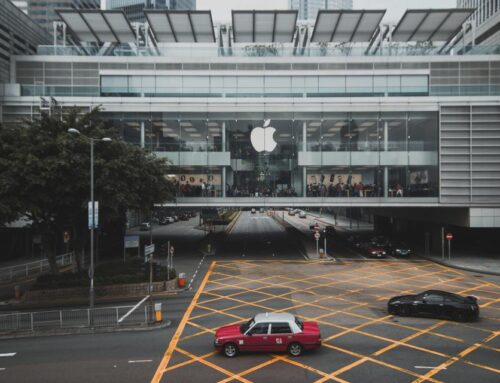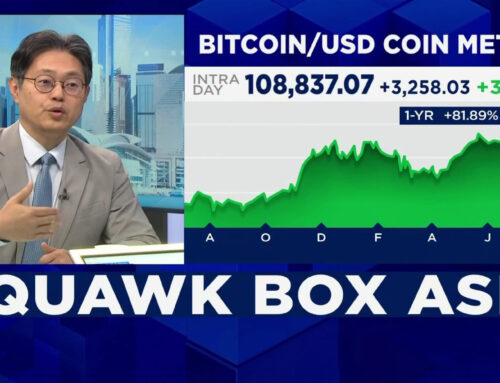Three ways to invest $10,000 in the next three months
July 2, 2025
Global stock markets have snapped back nicely after US President Donald Trump eased his proposed trade tariffs, while investors have also shrugged off rising Middle East tension. Yet uncertainty remains.
Some investors will be looking to play it safe, while others may be keen to go on the offensive.
Tony Hallside, chief executive at Dubai-based advisers STP Partners, sees “a meaningful window for investors to position themselves ahead of a broader shift in market dynamics”.
If you are looking to invest $10,000 (Dh36,725) over the next quarter, here are three potential strategies.
The first involves investing in the forgotten continent, the second targets a low-risk asset class that may swing back into favour, while the third looks towards two economic powerhouses due for a recovery.
As with any investment, always consider both the risks and rewards, and aim to hold for the long term. Mr Hallside says: “Don’t chase hot tips but look for structural plays that can deliver over a five to 10-year horizon.”
Investors snubbed Europe for years as they chased the US bull market ever higher. That is now changing.
In April, BlackRock chief executive Larry Fink said Europe is finally “waking up” after years of stagnation and regulatory gridlock, predicting a productivity boom as the EU tears down internal trade barriers and embraces reform.
Others agree. Luca Paolini, chief strategist at Pictet Asset Management, says European economies will benefit from big fiscal programmes and deregulation, while the US slows. “This will spell the end of US stock market outperformance,” he predicted.
A survey by Natixis Investment Managers found that seven in 10 strategists expect European markets to beat the US in 2025. Almost half backed defence stocks to deliver the strongest returns as Europe rearms.
Vijay Valecha, chief investment officer at Century Financial in Dubai, also favours Europe as monetary policy becomes less restrictive. “Interest rate cuts are making new borrowing less expensive for firms and households, and loan growth is picking up,” he says.
The European Commission has announced a €150 billion ($175.8 billion) funding mechanism to support defence, with total spending potentially reaching €800 billion.
Germany’s €500 billion stimulus package is another long-term boost, he adds.
Mr Valecha says this is driving interest in domestic-focused European stocks, particularly in infrastructure, industrials, energy and defence. “Also, European equities remain relatively inexpensive compared to their US counterparts. This offers an attractive entry point for global investors.”
He suggests exchange-traded funds such as the Select STOXX Europe Aerospace & Defence ETF, which targets sectors powering Europe’s economic transformation.
Don’t completely abandon the US, Mr Hallside cautions. “There’s been a lot of noise around whether valuations are stretched, but given earnings resilience, free cash flow and US consumer strength, it’s hard to argue against staying invested.”
He suggests buying ETFs to track the S&P 500 or Nasdaq. “Use market dips as entry points,” Mr Hallside recommends.
After years in the doldrums, fixed income is finally catching investors’ attention again.
With interest rate cuts on the horizon and equity markets looking fully priced, bonds offer both income and stability in an uncertain world.
Mr Valecha notes that while the US Federal Reserve held its funds rate at 4.25 per cent to 4.5 per cent in June, a cut in September is a near certainty.
“This would support long-dated US government bonds, or Treasuries, which are more sensitive to rate shifts. ETFs such as the iShares 20+ Year Treasury Bond ETF (TLT) offer exposure to this trade,” he explains.
He also sees promise in US municipal bonds. “State and local governments have maintained solid fiscal health. Elevated yields in municipal bonds provide attractive income opportunities.” He points to the Guggenheim Taxable Municipal Bond & Investment Grade Debt Trust (GBAB), which offers yields as high as 10 per cent.
Mr Paolini at Pictet is also keen. “Global investors should increase their overall exposure to bonds, which is now very low after a decade of very poor performance.” He sees value in emerging market debt, inflation-linked US Treasuries and developed market credit.
Mark Munroe, investment director at fund manager Aberdeen, says short-dated bonds are “in something of a sweet spot right now”. “They allow investors to lock into attractive yields that are higher than cash, while keeping volatility low.”
He adds that most investors now expect interest rates to come down gradually, and favours lower-risk investment grade corporate bonds.
The risks? Shifting inflation or tariff pressures could hit bonds. However, with yields still attractive, now is a good time to invest.
Options include the Vanguard Short-Term Treasury ETF, iShares 0–5 Years TIPS Bond ETF, or the iShares 0–5 Year Investment Grade Corporate Bond ETF.
Mr Valecha says safety seekers should not ignore gold either. “The precious metal is now more than just a safety play, it’s becoming a strategic asset. The price could hit between $3,600 and $3,800 in the medium term and possibly exceed $4,000 if current trends continue.”
Stick to a buy-on-dips strategy. Get exposure to gold through ETFs like SPDR Gold Trust (GLD) or physical gold, he says.
These two economic giants have had a rough ride lately, but experts suggest the worst may soon be over.
There is a meaningful window for investors to position themselves ahead of a broader shift in market dynamics
Tony Hallside,
chief executive, STP Partners
India’s growth story has been hit by a slowdown in consumer spending, tight liquidity and falling government expenditure, all worsened by fears of US tariffs.
Yet investment managers say valuations have now dropped to more reasonable levels, presenting a fresh entry point for long-term investors who can handle a little volatility.
Rita Tahilramani, investment director of the abrdn New India Investment Trust, views India’s slowdown “as temporary and cyclical in nature”.
“The Reserve Bank of India started its rate cutting cycle in February and is adding liquidity to the market,” she says.
“While earnings growth slowed in the most recent reporting season, we expect India to continue generating comfortable double-digit earnings growth going into next year.”
Despite geopolitical risks, she remains bullish on India’s long-term potential, citing support for middle-class consumption, infrastructure investment and manufacturing incentives. “Any correction in share prices would be, in our view, a buying opportunity,” she adds.
Rob Burgeman, wealth manager at RBC Brewin Dolphin, has his eyes on China. “All of a sudden, it looks like an interesting place to invest,” he says, highlighting progress in artificial intelligence and signs that new tariffs may be less damaging than feared.
Mr Burgeman says the weaker US dollar, shifting supply chains and lighter debt loads should all work in favour of emerging markets. “What’s good for China is often good for the wider Asia Pacific region as well,” he adds.
Search
RECENT PRESS RELEASES
Related Post


